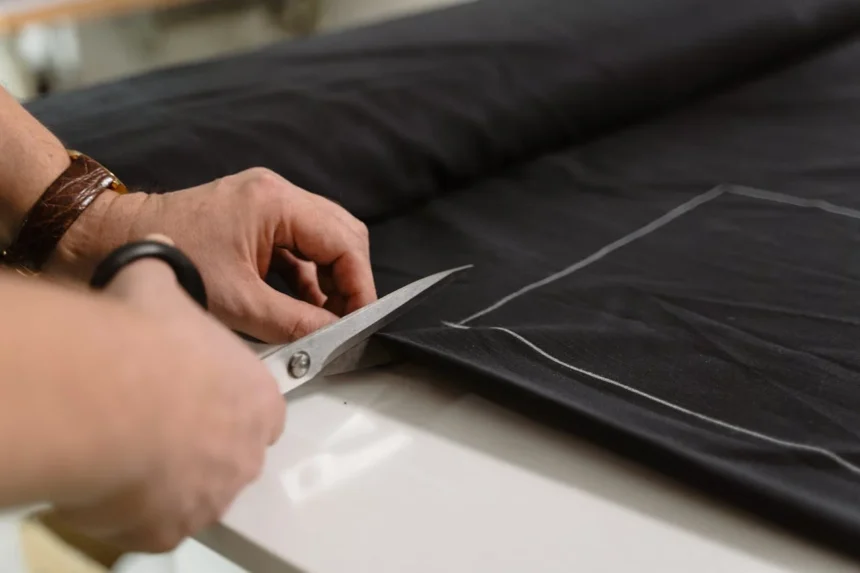The term “luxury fashion” traditionally evokes images of exclusivity, opulent materials, exquisite craftsmanship, and, often, an undeniable price tag. However, in a world that is increasingly aware of its environmental footprint and social inequalities, the very definition of luxury is undergoing a radical transformation. What happens when the pursuit of lavishness collides with the imperative of ethical responsibility? The answer is sustainable luxury fashion, a powerful movement that is redefining elegance, authenticity, and actual value for the modern consumer. This isn’t just a fleeting trend; it’s a fundamental recalibration of an industry, driven by conscious consumerism and the undeniable limitations of our planet’s resources. Join us as we explore why this harmonious merger is set to dominate the future of high fashion.
Decoding Sustainable Luxury: What Does it Actually Mean?
In an era marked by greenwashing, understanding what truly defines sustainable luxury fashion is crucial. It’s far more than just using organic cotton or reducing plastic packaging; it’s a holistic commitment embedded in every facet of a brand’s operations.
True sustainable luxury goes beyond buzzwords and marketing ploys. It scrutinizes the entire supply chain, demanding transparency and accountability. We can break down its core tenets into the Three P’s:
- Planet: This encompasses resource efficiency, drastic reduction of carbon footprint, and innovative zero-waste design principles. It’s about minimizing the environmental impact from raw material cultivation or extraction to manufacturing and distribution. Think renewable energy in factories, water conservation, and toxin-free dyes.
- People: Ethical treatment of workers is non-negotiable. This means fair wages, safe and healthy working conditions, and respect for human rights across all tiers of the supply chain. It also extends to ethical sourcing of raw materials, ensuring local communities and ecosystems are respected.
- Product: The ultimate goal is longevity and circularity. Sustainable luxury pieces are designed to last, often featuring repair programs and precise end of life planning that allows materials to be recycled or biodegraded without harm.
Ultimately, the higher price point of sustainable luxury fashion isn’t just for status; it reflects superior quality, meticulous traceability, and deeply ethical production practices. It’s an investment in a garment’s longevity, its story, and the integrity of its creation, not merely a fleeting purchase.
The Pillars of True Sustainability in Luxury Production
The tangible shift towards sustainability in luxury is driven by innovation in materials, a renewed focus on enduring craftsmanship, and an unwavering commitment to transparency.
- Revolutionary Materials: The days of virgin materials being the sole marker of luxury are fading. We’re seeing exciting advancements:
- Recycled Cashmeres and Polyesters: Brands are closing the loop by transforming post-consumer waste into high-quality textiles that are often indistinguishable from their virgin counterparts.
- Next-Gen Vegan Leather: Beyond synthetic plastics, innovators are crafting luxurious alternatives from mushroom mycelium, pineapple leaves, apple waste, and even cactus, offering animal-free options without environmental compromise.
- Low-Impact Natural Fibers: Organic cotton, linen, hemp, and regeneratively farmed silks minimize pesticide use, water consumption, and soil degradation.
The drive for truly sustainable sourcing often starts at the very beginning of the supply chain. For a deep dive into the technology ensuring our fibers are planet-positive and ethically grown, see how Smart Farming is Revitalizing Agriculture.
- Craftsmanship and Longevity: At its heart, luxury has always been about quality. Sustainable luxury fashion doubles down on this, emphasizing:
- Quality Over Quantity: The antithesis of fast fashion, these pieces are made to be cherished, repaired, and passed down.
- Artisan Techniques and Slow Production: Valuing the human touch and the time-honored skills that ensure durability and a unique aesthetic.
- Classic, Repairable Design: Moving away from fleeting trends, brands create timeless silhouettes that encourage a lifetime of wear, supported by in-house repair services.
- Supply Chain Transparency: For many brands, traceability is the new frontier.
- Utilizing blockchain technology and digital IDs to track a garment’s journey from the raw material source to the final product, providing consumers with unprecedented insight.
- This commitment ensures not only environmental compliance but also ethical labor practices across global networks, allowing consumers to make informed choices.
Key Trends and Innovation in Sustainable Luxury
The evolution of sustainable luxury fashion is dynamic, embracing circular models and digital advancements.
- The Circular Economy Revolution: This is perhaps the most transformative trend, reimagining the entire lifecycle of a garment:
- Luxury Rental Platforms: Services like Rent the Runway and By Rotation allow access to high-end pieces for special occasions, extending their lifespan and reducing individual consumption.
- Resale and Pre-Loved Market: Authenticated luxury consignment platforms (e.g., The RealReal, Vestiaire Collective) are booming, shifting the perception of pre-owned goods from used to invested.”
- Repair and Refurbishment Services: A growing number of luxury houses are offering in-house repairs, emphasizing maintenance and longevity over replacement.
- Digitalization and Immersive Design: Technology is reducing waste even before production.
- The rise of digital and phygital (physical + digital) clothing allows for virtual try-ons and reduces the need for physical samples in the design process.
- 3D printing and on-demand manufacturing minimize overproduction and material waste.
However, as luxury brands adopt digital IDs, virtual try-on tools, and advanced tracking, it’s critical to understand the data privacy risks. For an essential analysis of these concerns, read about the Ethical Issues of Biometric Technology.
- Celebrity and Influencer Endorsements: High-profile figures and brands are increasingly utilizing their platforms to promote sustainable practices, normalizing and glamorizing conscious consumption.
The Conscious Consumer and Investment Value
The driving force behind sustainable luxury fashion is a profound shift in consumer values.
- Changing Demographics: A growing segment, particularly among Gen Z and Millennials, prioritizes ethical and environmental considerations alongside aesthetics. They seek brands that align with their personal values.
- Emotional Durability: Consumers experience a more profound sense of pride and integrity when purchasing goods that are not only aesthetically pleasing but also produced with respect for both people and the planet. This adds an emotional layer to luxury.
- Investment Piece Mentality: The perception of luxury items is moving from a depreciating asset to an enduring investment. High-quality, ethically produced pieces hold their value better in the resale market or become cherished heirlooms, embodying a narrative of responsible consumption. This isn’t about fleeting trends, but about building a wardrobe of intentional, lasting pieces.
Conclusion: The Future is Sustainable and Luxurious
The paradigm shift towards sustainable luxury fashion is undeniable and irreversible. It’s a testament to the fact that elegance and ethics are not mutually exclusive but deeply intertwined. This movement fulfills the emotional, ethical, and quality demands of the modern consumer, demonstrating that true luxury now encompasses environmental stewardship, social responsibility, and unparalleled craftsmanship designed for lasting value. The next decade will undoubtedly see sustainability evolve from an optional feature to the absolute minimum standard for all luxury goods. It’s time to reevaluate our closets, invest in pieces with integrity, and embrace the future of sustainable luxury fashion, a future that is as beautiful as it is responsible.




